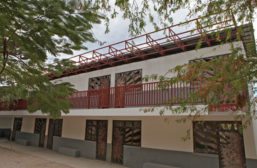Articles by Jenna M. McKnight
Iron Market
Rising from the Rubble: The 2010 Haiti earthquake caused severe damage to the bustling Iron Market, a treasured icon. Thanks to a remarkable restoration, the bazaar is back in business.
Read More
Sustainable Solutions
At a time when many districts are tightening their belts, the green schools movement is gaining steam. We check in with administrators and architects, along with nonprofit groups that are stepping up to help.
Read More
Copyright ©2024. All Rights Reserved BNP Media.
Design, CMS, Hosting & Web Development :: ePublishing
